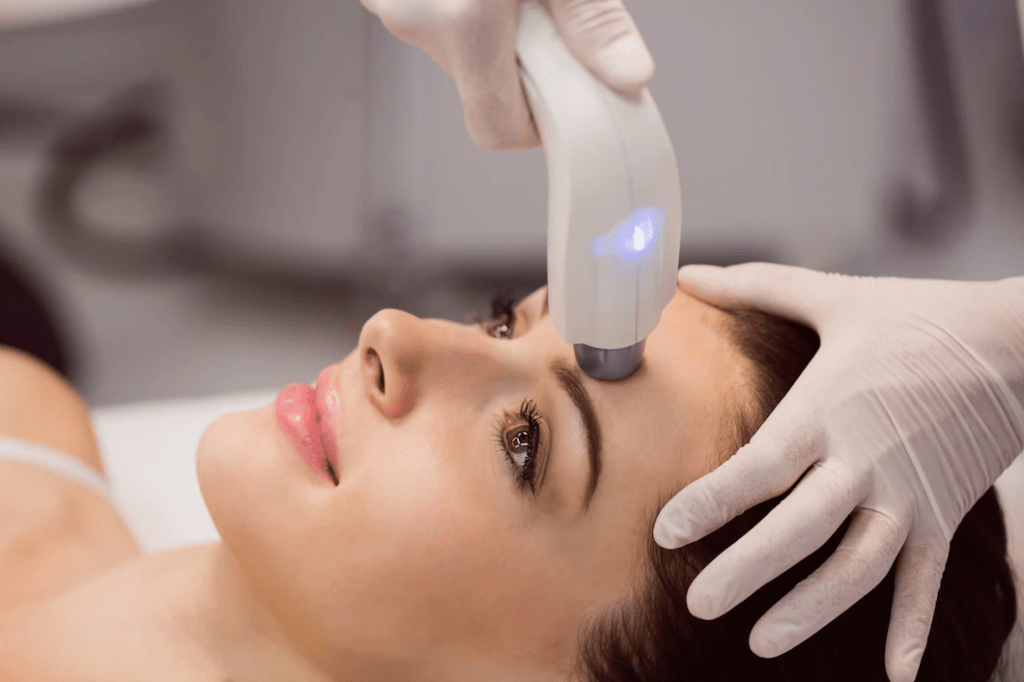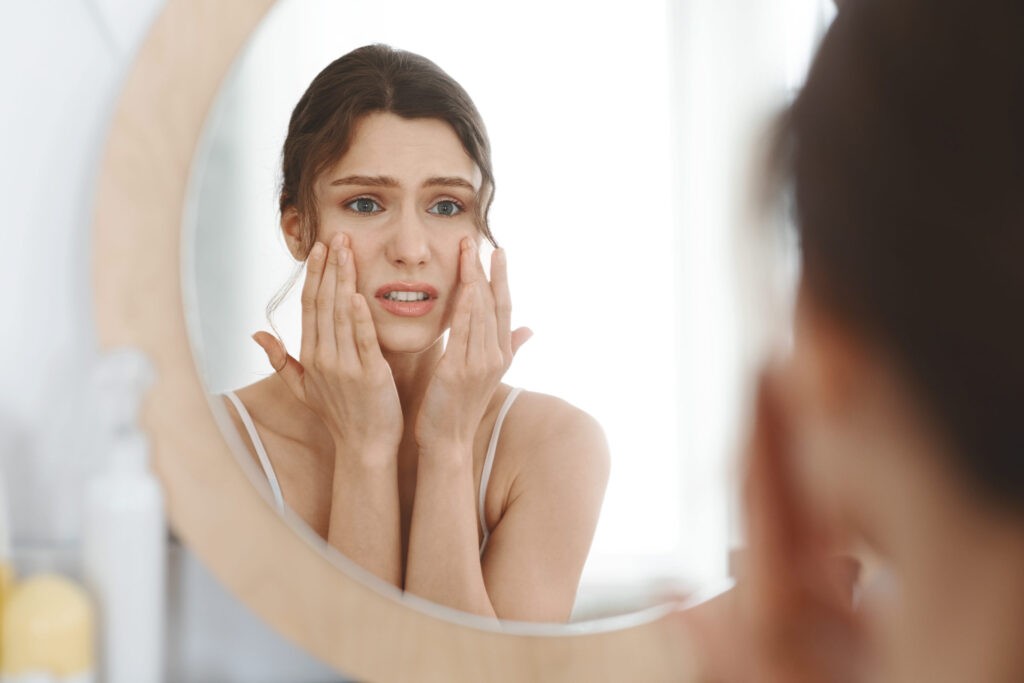Skin, Hair & Aesthetics Services
Best Dermatologist in Nashik
Dr. Snehal Daga is a best dermatologist in Nashik. She is the skin specialist in Nashik, specializing in disorders of the skin and providing the best care for all skin conditions. Dermatology services for skincare include, among others, the treatment of acne scars, deep pigmentation, anti-aging, lipoma, IV glutathione, and derma roller.
Most dermatologists are skilled in treating a variety of skin issues, but some have additional credentials in a particular branch of skincare. Dr. Daga’s Clinic, which offers the best skin care in Nashik, is run by Dr. Snehal Daga.

Skin Services

Skin Diseases :
Skin diseases are conditions that affect your skin. These diseases may cause rashes, inflammation, itchiness or other skin changes. Some skin conditions may be genetic, while lifestyle factors may cause others. Skin disease treatment may include medications, creams or ointments, or lifestyle changes.
Certain lifestyle factors can lead to the development of skin disease. Underlying health conditions may affect your skin, too. Common causes of skin diseases include:
- Bacteria are trapped in your pores or hair follicles.
- Conditions that affect your thyroid, kidneys or immune system.
- Contact with environmental triggers, such as allergens or another person’s skin.
- Genetics
- Fungus or parasites living on your skin.
- Medications, such as the ones that treat inflammatory bowel disease (IBD).
- Viruses.
- Diabetes.
- Sun.
Skin disease symptoms vary significantly, depending on what condition you have. Skin changes are not always due to skin diseases. For example, you may get a blister from wearing ill-fitting shoes. However, when skin changes show up with no known cause, they may be linked to an underlying condition.
Generally, skin diseases may cause:
- Discoloured skin patches (abnormal pigmentation).
- Dry skin.
- Open sores, lesions or ulcers.
- Peeling skin.
- Rashes, possibly with itchiness or pain.
- Red, white or pus-filled bumps.
- Scaly or rough skin.
Often, a healthcare provider can diagnose a skin disease by visually examining your skin. If looking at your skin doesn’t provide clear answers, your provider may use tests such as:
- Biopsy, removing a small piece of skin to examine under a microscope.
- Culture, taking a skin sample to test for bacteria, fungus or viruses.
- Skin patch test, applying small amounts of substances to test for allergic reactions.
- Blacklight examination (Wood light test), using an ultraviolet (UV) light to view your skin’s pigment more clearly.
- Diascopy, pressing a microscope slide against a skin patch to see if the skin changes colour.
- Dermoscopy uses a hand-held device called a dermatoscope to diagnose skin lesions.
- Tzanck test, examining the fluid from a blister to check for herpes simplex or herpes zoster.
Many skin diseases respond well to treatment. Depending on the condition, a dermatologist (doctor specializing in the skin) or another healthcare provider may recommend:
- Antibiotics.
- Antihistamines.
- Laser skin resurfacing.
- Medicated creams, ointments or gels.
- Moisturizers.
- Oral medications (taken by mouth).
- Steroid pills, creams or injections.
- Surgical procedures.
You may also reduce symptoms of skin conditions by making lifestyle changes:
- Avoid or limit certain foods, such as sugar or dairy, if your healthcare provider suggests it.
- Manage stress.
- Practice good hygiene, including proper skin care.
Avoid excessive alcohol use and smoking.

Hair and aesthetic Services
What are aesthetic problems and signs of ageing?
A large number of aesthetic problems and signs of ageing are focused on the middle and upper part of the face, an extremely delicate area due to its proximity to the eyes. This means it is essential to seek the advice of a specialist ophthalmologist with knowledge and experience in order to make one’s look and facial expression more youthful, ensuring the safety of the eyes and eyesight with all medical and ophthalmological guarantees.
Some of the most frequent reasons for consultation among patients include:
- Bags under the eyes
- Dark circles
- Wrinkles in the periocular and upper midface areas
- Excess fat in the eyelids
- Tired eyes and droopy eyelids
- Loss of facial volume
- Sunken cheeks
- Reduced facial contours and structure.
- Reduced skin quality


Aesthetic defects may be associated with very different causes:
- Ageing
- Genetic factors
- Trauma
- Repeated facial expressions
- A lack of skin care (excess sun, dehydration and poor diet, etc.)
- Ocular or systemic disorders that affect ocular or periocular morphology
- Paralysis
You do not have to wait until aesthetic problems, such as bags under the eyes and dark circles, periocular wrinkles or droopy eyelids, leave a noticeable mark on your face before you take action and give it back a healthy, rejuvenated appearance. Along these lines, most anti-ageing treatments offered by the Dr Dagas Skin Care can be applied for preventive purposes (before the age of 40) and once the signs begin to appear or already exist.
In general, patients want to be rejuvenated but want to still recognise themselves in the mirror, thanks to natural and discreet results. To offer the best solution and provide an effects response to the symptoms afflicting them, it is important to bear in mind that not all skins are the same or have the same degree of maturity, or that there are different types of dark circles depending on their origins, for example: hereditary, racial or due to pigmentation alterations. A correct study of each case and personalised advice are therefore essential in the individual selection and application of a wide range of therapeutic options.
Surgical treatments
All surgeries are performed on outpatients and guarantee good postoperative recovery thanks to the use of small incision procedures that are only within the reach of experts with a command of both plastic surgery and ophthalmology.
Some of the most popular surgeries include:
- Cosmetic eyelid surgery (blepharoplasty)
- Transconjunctival midface lift
- Canthoplasty
Non-surgical treatments
Performed in the consulting room, are painless and easy to apply in short sessions, with fast recovery that does not hinder everyday activities or require sick leave.
- Injections of fillers (hyaluronic acid, calcium hydroxylapatite)
- Injections of botulinum toxin (Botox)
- Micro-injections of hyaluronic acid (Skin Boosters)
- Ultrasound lifting (Ultherapy)
- Carboxytherapy
- Collagen Therapy
- Mesotherapy
- Peeling/Resurfacing
- Resurfacing
